Pan-fried Abalone recipe with sweet soy glaze is my simplified take on the classic Korean dish Jeonbokcho that came from the royal cuisine. Tender but slightly chewy, flavorful sauce but not overpowering the delicate flavors of the abalone, this truly is a luxurious appetizer dish fit for special celebrations, holidays or your most honored guests.
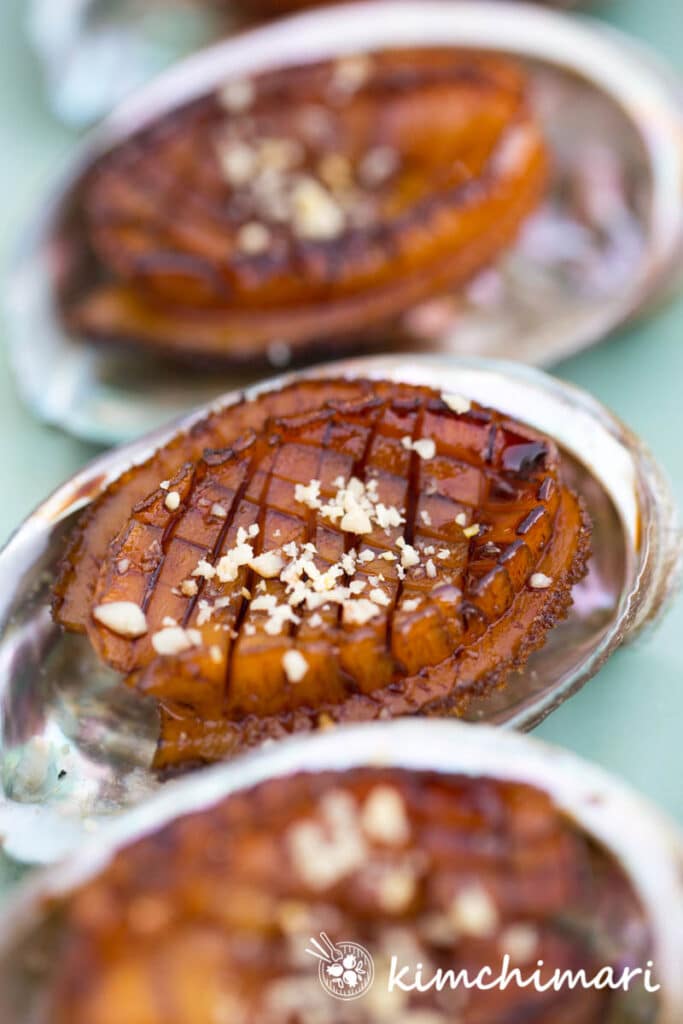
Abalone or Jeonbok (전복) is something that I always try to have when I go back to Korea because the Korean one is somehow different from those that you get in the US. Not to mention, buying fresh American abalone in the US is almost impossible.
I can’t say I’ve had Abalone in the US that many times but every time I order it from a restaurant, I find that it has little flavor and is just too soft for my taste. I like them chewy.
I have seen live, imported Korean Jeonbok at Korean markets but they are usually so expensive I never bought them. And thus, I never tried to even cook with them here in the US. This was my first attempt at making something different than Jeonbok juk and Heo and it turned out so well, I decided I had to share the recipe!
FYI, WooltariUSA recenlty sent me some frozen Korean abalone from Wando 완도 – an island in Korea famous for their jeonbok – for me to try. Thank you Wooltari! BTW, wooltariUSA is an online Korean store that sells many premium Korean goods directly imported from Korea. (I recently did a giveaway on my IG – of Korean grown Gochugaru, Sesame Oil and Gochujang).
But before we go on, some quick basic info about this lovely yummy seafood.
What is Abalone?
They are actually not a shellfish but are very large marine snails, marine gastropod molluscs in the family Haliotidae. It also goes by ear shells, sea ears, and muttonfish or muttonshells in Australia, ormer in the UK, perlemoen in South Africa, and paua in New Zealand. (source Wikipedia)
There are over 50 species worldwide and is considered a delicacy in many cultures.
How do you eat Abalone?
My favorite way to eat abalone is to eat them sashimi style as Jeonbok Hoe 전복회 with a little Cho Gochujang sauce. But do this only if the it is still alive when you get it.
How to cook them
If it’s been frozen or is dead then it is best to cook them. You can steam, grill or pan-fry them like I’m doing here. You can also make Jeonbok Juk (porridge) with it which is my 2nd favorite way to enjoy this fabulous seafood. I hope to share a recipe soon.
What does it taste like?
As it is a type of a snail, abalone has a wonderfully silky texture but slightly chewy texture as an escargot but can become quite tough if cooked incorrectly. When eaten raw, it has a crunchy texture in the center which makes it extra fun to eat. Flavor-wise, it is quite mild, subtly sweet, buttery and has a very mild fresh ocean flavor, not at all fishy – basically somewhat similar to scallops.
Types of Korean abalone
There are mostly 6 different kinds of this wonderful seafood in Korea. But the most common and popular ones are 참전복 Cham Jeonbok (Haliotis discus hannai), 까막전복 Kkamak Jeonbok (Haliotis discus), 말전복 Mal Jeonbok (H. gigantea) and 왕전복 Wang Jeonbok (H.madaka). The one I have is Cham Jeonbok.
Mother of Pearl? Mother of JinJoo? 😝
The shells are also highly valued as it’s used in making mother of pearl jewelry (nacre). Called Jagae 자개 Lacquerware in Korean. Koreans have used these to decorate wood furniture and other products as an inlay for thousands of years. History records Nacre-inlaid lacquerware peaked during the Goryeo Kingdom (918-1392) and has since been a big part of Korean culture.
I remember when I was little, almost every home had some piece of Jagae whether it was on a table, dresser, jewelry box or even as a faux Jagae table with foldable metal legs. This reminds me of something.. about my name.
Because JinJoo 眞珠 means pearl in Korean and my mom told me that when I was born and my grandpa saw me, he decided to name me JinJoo because my face was as round as a pearl.. hahaha..Well, I actually hated this story growing up because I was so self-conscious of my big round face. But I always did love the name. Made me feel special and like a treasure. ❤️ I still don’t like my big round face but nothing much I can do about that..😝
Let’s get cooking, shall we?
TIP FROM JINJOO!
Chef’s Tips
- Watch my video to learn how to clean abalone. Don’t forget to remove the beak/mouth.
- Don’t overcook, also precook in shell – overcooking jeonbok will make it tough. Also, pre-cook in the shell first before grilling or sauteeing and it will be very tender.
- Don’t go overboard with seasonings – abalone is very mild flavored so don’t use heavy sauces or seasonings. It is best to be a minimalist when cooking this seafood
- Best when warm so enjoy it right after cooking
- Doesn’t reheat well either so don’t plan on leftovers.
Where can I get Korean Abalone?
You can buy fresh live ones from Korean grocery stores sometimes or other Asian stores. I know that Koreans, Japanese and Chinese all love abalone so try those ethnic stores (I’m sure other cultures eat them too, I just know these definitely do). In the US, you can also buy frozen Korean abalone (flash frozen and directly flown in) online at wooltariusa website. FYI – I’m not an affiliate nor is this a sponsored post but I’m just sharing the info because this abalone was really fresh and of great quality!
Serving Suggestions
- Serve as an appetizer more than a side dish as it has very mild flavors and is best enjoyed alone. If you want to make it a banchan, amp up the sauce flavors and make a jorim rather than a pan-fried dish.
- Serve as a luxurious appetizer with some sparkling wine for the most special celebrations. Sparkling wines offer the acidity and minerality that complement earthy foods like oysters and abalone.
About sparkling wines
- While there are many sparkling wines you can choose from, for highest quality look for “méthode champenoise”, or “méthode traditionnelle” on the label, this assures the best tasting and most enjoyable sparkling wines as the 2nd fermentation is done in the bottle and hand-turned. And this Paso Doble is made with this method.
- Chill your sparkling wine to 45℉ and carefully remove the cage while keeping pressure on the cork. Slowly twist the cork and let the pressure push it out. Make sure you are not pointing the bottle at anyone.

| Servings: 3 | Cook Time: 20 min | Difficulty: Easy |
Step-by-Step Instructions
- Pre-cooking Abalone
- Clean abalone by lightly brushing the top and sides with a soft brush but still leave it intact and attached to the shell. Remove most of the black grime but no need to remove all. WATCH VIDEO to see how I clean.
- Steam abalone (still attached to shell) for 10 min or until a metal skewer or chopstick goes in easily. No need to cook all the way. *Steaming it while still attached to the shell is the trick to making it tender
- When cooked, take it out of the steamer and let it cool for a few minutes so you can handle it. Keep them covered while you cool it so it doesn’t get too dry.
- Once cooled, remove from the shell and remove the mouth/beak and intestines. WATCH VIDEO. These intestines are a delicacy btw (like the tomalley of a lobster) and it’s what makes jeonbok juk green. So save it and try it.
- Score the jeonbok by slicing just the top part of it in a grid pattern. This is so the sauce will get absorbed into the meat. Cover and set aside.
- Clean abalone by lightly brushing the top and sides with a soft brush but still leave it intact and attached to the shell. Remove most of the black grime but no need to remove all. WATCH VIDEO to see how I clean.
- Make Sauce
- Slice a piece of fresh ginger – 1/8th thick slice.
- In a small sauce pot – mix soy sauce, sugar, water, piece of fresh ginger. Bring to boil and then simmer for 5 min or so until sauce is reduced.
- To the reduced sauce, add maple syrup, rice wine and guk ganjang (korean soup soy sauce) and simmer again for another 3-5 min till it becomes thick and syrupy like above.
- Skewer abalones so you can cook them evenly and easily (you don’t have to). Coat them with sauce. Heat a non-stick frying pan on medium heat and cook the jeonbok just couple minutes on each side until it is nicely browned. Because it’s already steamed, you just need to put a nice sear on these. Press them down with a spatula as they cook so they get evenly browned not just the edges. Brush some more sauce as needed as you cook them.
- Here’s a cross-section to show you how it looks when done! Garnish with some chopped pine nuts for extra rich flavor.
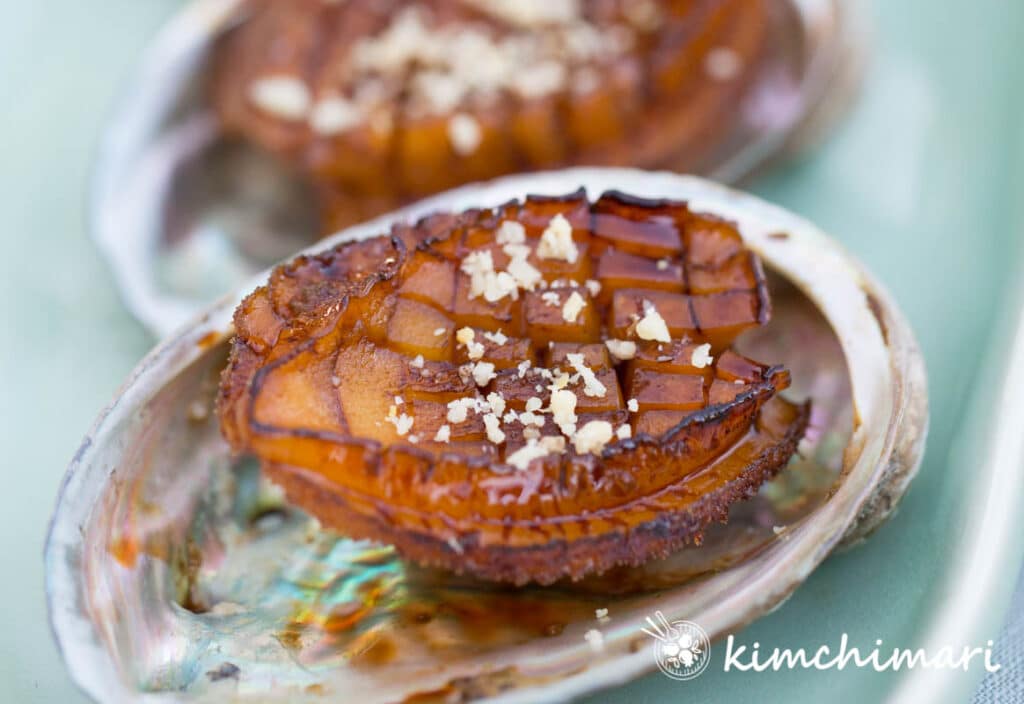
And there you go! I hope you enjoy this luxurious appetizer as much as we did. My husband was soo happy with this recipe that he asked me to take this picture (don’t ask me why he is looking away.. he had a reason but I forgot) of him to share on FB – also to show how much he has to suffer.. lol.. by having to wait sooo long until I was done with taking photos and videos..hahaha. I do appreciate his patience though. ❤️Bon Appetit!

Watch Video to see how I clean, score and pan-fry to make the perfect abalone recipe!
Pan-Fried Abalone Recipe with Soy Glaze
Ingredients
- 6 abalone
sauce
- 1 Tbsp soy sauce jin ganjang (sempio, kikkoman)
- 4 Tbsp water
- 1 Tbsp sugar
- 1 Tbsp maple syrup or corn syrup, oligo syrup
- 1 Tbsp rice wine or cooking sake, mirin or any white wine
- 1/4 tsp Korean Soup Soy Sauce Guk Ganjang (this really makes this dish so try it but can be omitted, in which case, reduce sugar)
- 1~2 tsp pine nuts finely chopped
- 1 piece fresh ginger (1/8 in thick slice) or pinch of ginger powder
Instructions
Pre-cook Abalone
- Clean abalone by lighlty brushing the top and sides with a soft brush but still leaving the abalone intact in the shell. WATCH VIDEO to see how I clean. You don't have to remove all the black stuff – just clean and rinse enough so the dirt and grime is removed.
- Steam abalone (still attached to shell) for 10 min or until a metal skewer or chopstick goes in easily. No need to cook all the way. *Steaming the abalone still attached to the shell is the trick to making a tender abalone
- When cooked, take it out of the steamer and let it cool for a few minutes so you can handle it. Keep abalone covered while you cool it so it doesn't get too dry.
- Once cooled, remove abalone from shell and strip off intestines and cut out the mouth/beak. SEE VIDEO.
- Score abalone by slicing just the top part of it in a grid pattern. This is so the sauce will get absorbed into the meat. Cover and set aside.
Make Sauce
- Slice a piece of fresh ginger – 1/8th thick slice and in a small sauce pot – mix with soy sauce, sugar, water, piece of fresh ginger.
- Bring to boil and then simmer for 5 min or so until sauce is reduced.
- To the reduced sauce, add maple syrup, rice wine and guk ganjang and simmer again for another 3-5 min till it becomes thick and syrupy like in pic.
- Skewer abalones so you can cook them evenly and easily (you don't have to). Coat them with sauce. Heat a non-stick frying pan on medium heat and cook the jeonbok just couple minutes on each side until it is nicely browned. Because it's already steamed, you are just getting a nice sear on these. Press them down with a spatula as they cook so they get evenly browned not just the edges. Brush some more sauce as needed as you cook them.
- Here's a cross-section to show you how it looks when done! Garnish with some chopped pine nuts for extra rich flavor.
Equipment
- non-stick frying pan
- sauce pot
- wooden skewers (optional)
- soft brush or tooth brush for cleaning
- steamer
Tips & Notes:
- Serve as an appetizer more than a side dish as it has very mild flavors and is best enjoyed alone. If you want to make it a banchan, amp up the sauce flavors and make a jorim rather than a pan-fried dish.
- Serve as a luxurious appetizer with some sparkling wine for the most special celebrations.
- Serve it warm, right from the pan if you can
- Nutrition facts on Abalone are missing because the database of the recipe card didn’t have the info. In general, farmed abalone is low in calories, fat and a good source of omega 3, iodine and phosphorous (phosphate). <http://www.ausab.com.au/recipes/abalone-health-benefits/>
- Use the Sauce with other ingredients – this is such a great mild soy glaze so make a batch and use it for other proteins or vegetables. If you don’t have Guk Ganjang (soup soy sauce), you can omit it but it will be missing a wonderful finish. Reduce sugar amount if you don’t add the guk ganjang because it can taste a bit sweet.



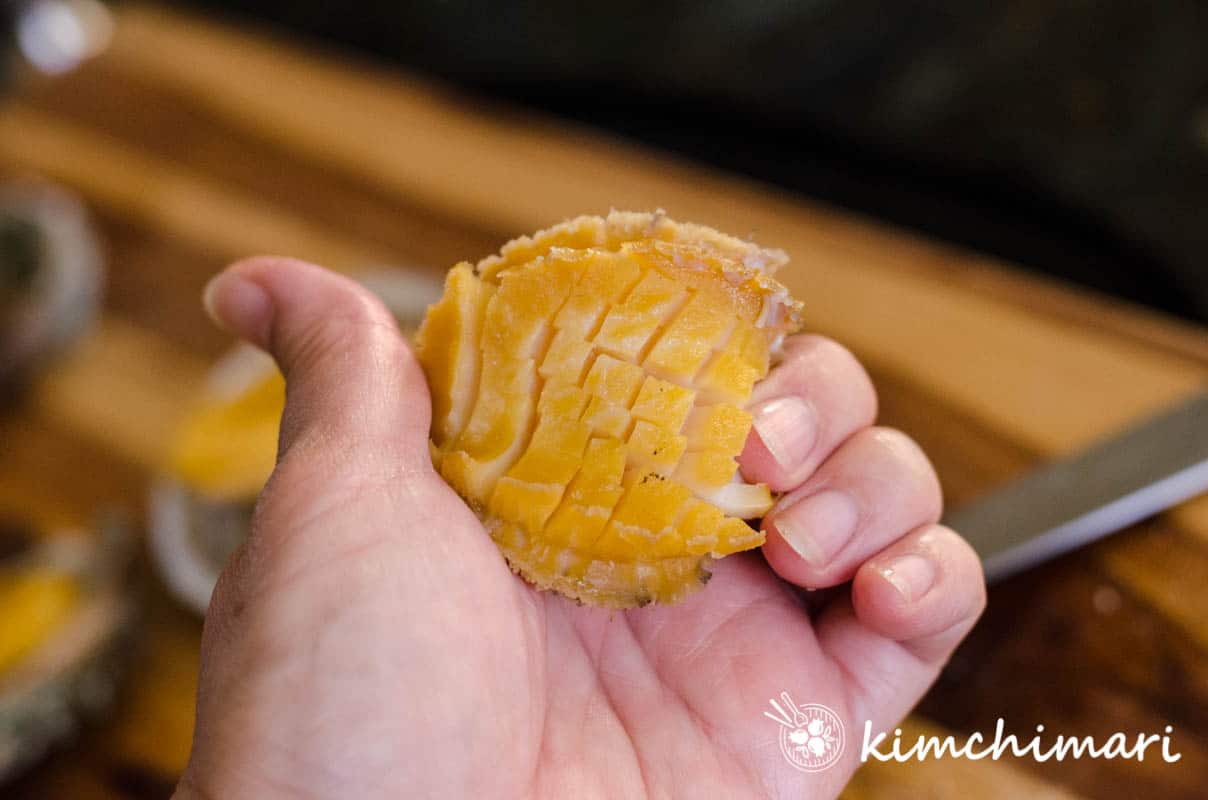
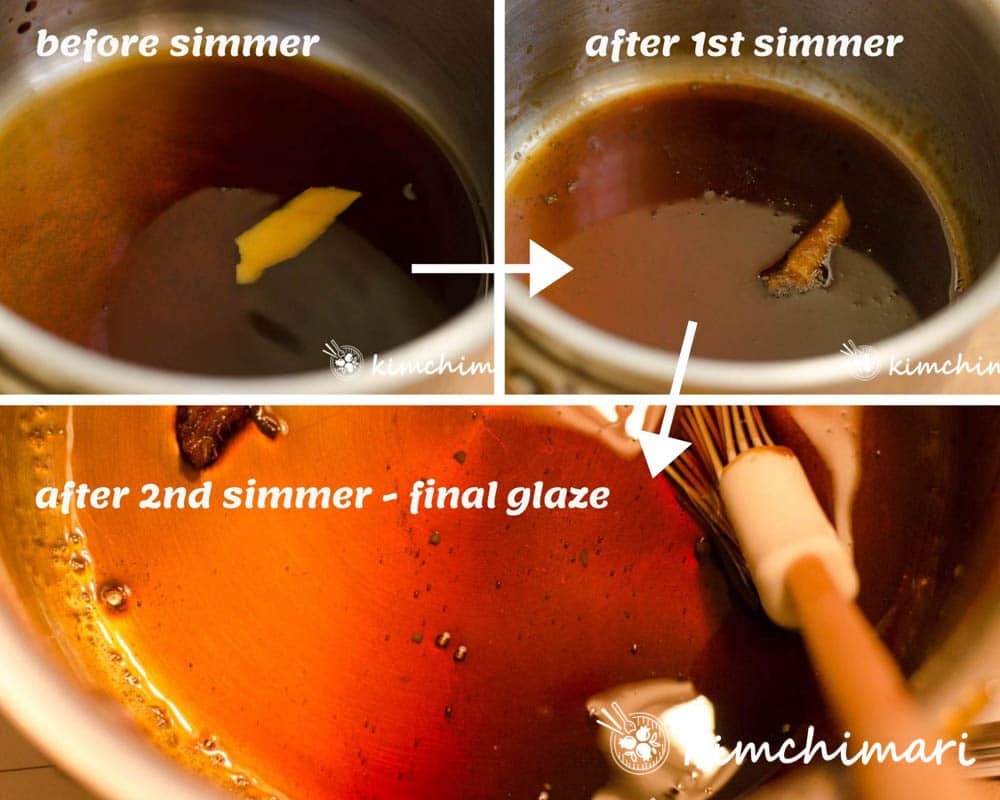
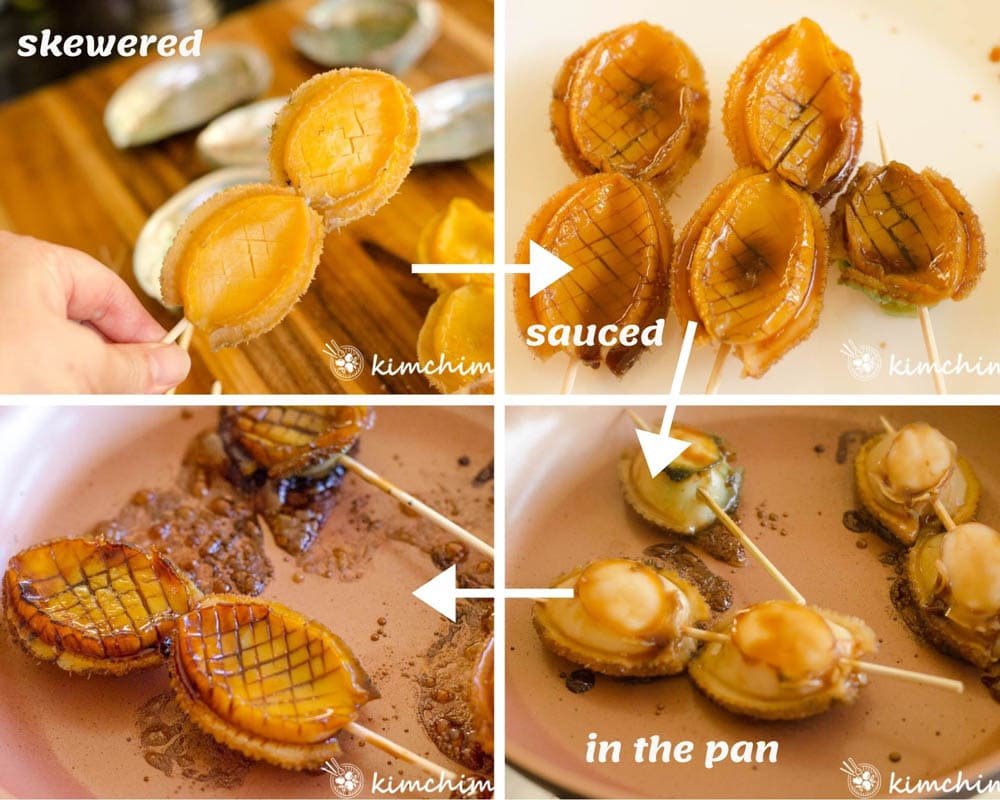
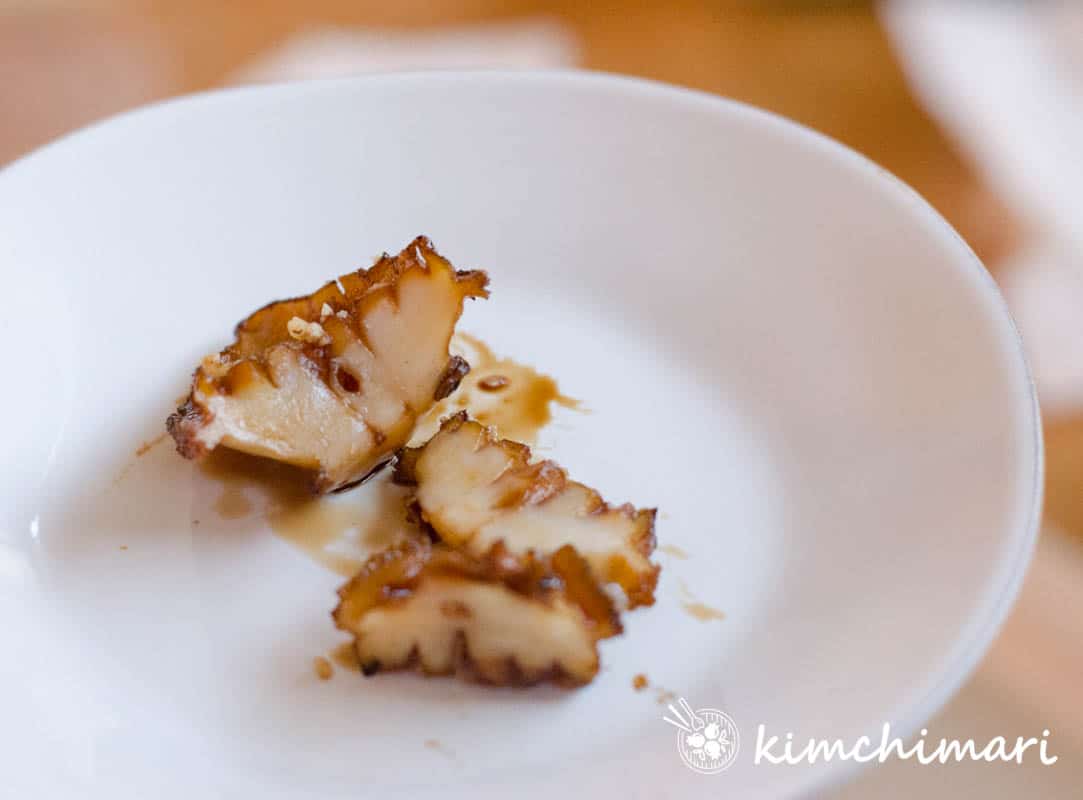
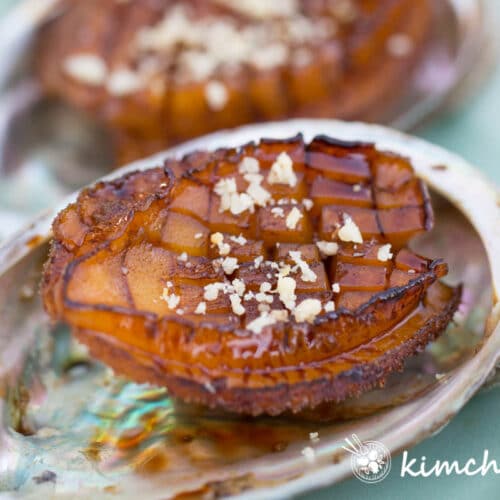
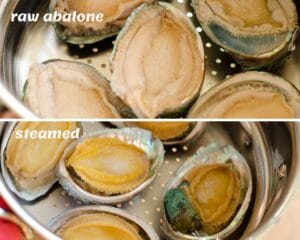
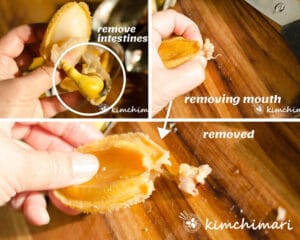
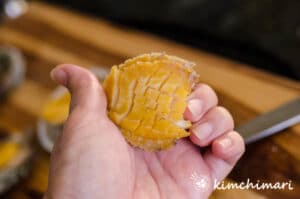
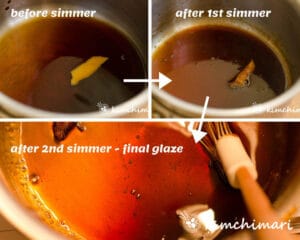
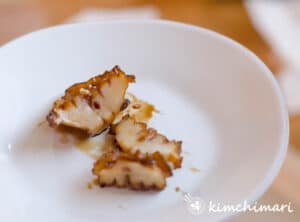
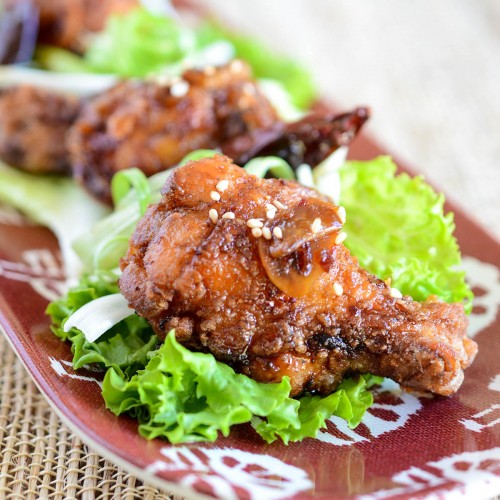

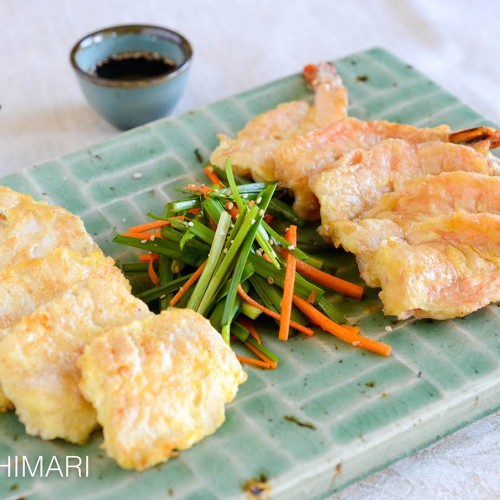
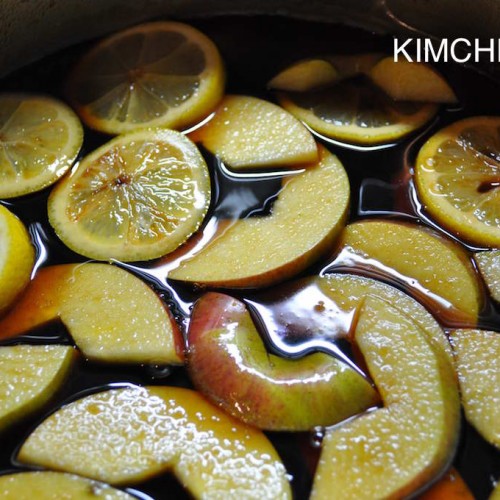
















I’m in Australia and would love to make this but just wondering if there’s anything I can substitute for Guk Gujang as I can’t seem to find it anywhere here!
Hi, did you try online? Like Amazon? If you still can’t find it, you can just use regular soy sauce with a little dash of fish sauce. Hope that helps!
We get green abalone where we live, Guernsey the UK, they’re indigenous to the group of islands. We call them Ormers and they’re fantastic. I go foraging for them every year on permitted days…
Great recipe, they’re also delicious butterflied and shallow fried in flour/egg and panko with a soy/ginger/palm sugar/chilli dip.
Oh Yes Abalone is delicious so many different ways! I do love them fried and also Koreans love them raw as hwe.
Great job describing the whole process and providing the pictures. Very helpful! I feel confident enough to give it a try! thank you!
Thank you so much Vicky!! I hope you can try it sometime!
Local Abalone if you wish; https://www.giovannisfishmarket.com/seafood-online/abalone/abalone-steaks-one-pound.aspx